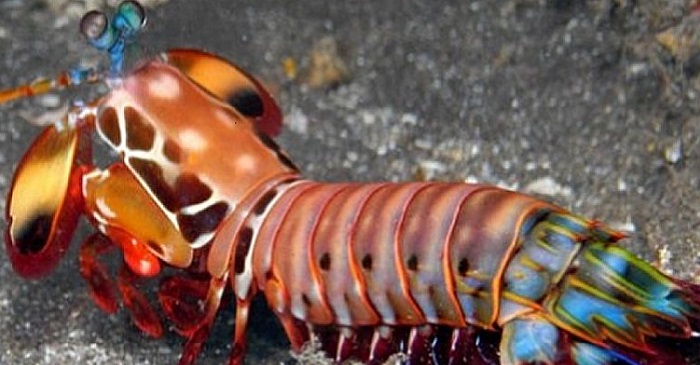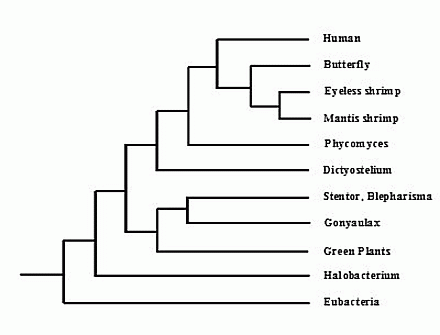Classification
Peacock Mantis Shrimp Taxonomic Classifications:
Domain- Eukarya
Members of the Domain Eukarya are defined as having a visible nuclei and organelles
with one more cells.
Kingdom- Animilia
The kingdom of Animilia is multicellular, heterotrophic, and must ingest
their product for to substane livelihood.
Phylum- Arthropoda
Arthropoda means jointed leg and contains invertebrate animals having an
exoskeleton, segmented body, jointed appendages, have cuticles of
calcium carbonate, and open circulatory systems. A couple
organisms that join the Odontodactylus scyllarus in
this category are the
Palaemonias alabame and the
Harpaphe haydeniana.
Class- Malacostraca
Malacostraca means soft shell which is misleading because that is only
evident after molting. This class is united by body plan which is
consists of 20 Body segments, divided into a head, thorax, and abdomen.
Order- Somatopoda
Somatopoda refers to mantis shrimp and are identified as marine
crustaceans. A few related organism in the same order as the
Odontodactylus scyllarus are the
Pseudoquilla ciliata and the
Squilla mantis.
Family- Odontodactyliade
Odontodactyliade can detect circular polarization of light and light
reflecting off the telson and uropods.
Genus- Odontodactylus
Odontodactylus are only specific mantis shrimp and interestingly are the genus of Odontactyliade.
Species- Odontodactylus scyllarus
Odontodactylus scyllarus specifically refers to the peacock
mantis shrimp, one of the larger and more colorful mantis shrimp.
Figure 1. The phylogency shown, reproduced exactly from Life Under the Sun, is correct but may be criticized as being "human-centric" because it places humans at the top [Nee, 2005, Nature 435:429]. A topologically identical and equally correct phylogeny could place humans at the bottom [Merchant et al, 2007, Science 318:245-50] or somewhere in the middle.
To find out more about what else Peter A. Ensminger writes about you can visit this personal page and browse through the vast number of articles he has to offer here.
Figure 2. The phylongy tree shows the nine main animal phyla along with the synapomorphies and examples of what kind of animal corresponds with each individual phyla. Original design by Sarah Albrecht visit her organism page here.
Our organim falls under the arthropoda in this phylongy tree. This means our organism has many synapomorphies that make it the way it is to belong under this kingdom. The synapomorphies that relate to Odontodactylus scyllarus are molting (ecdysis), protostomes, bilateral symmetry, triploblastic, tissue, and multicellularity.


